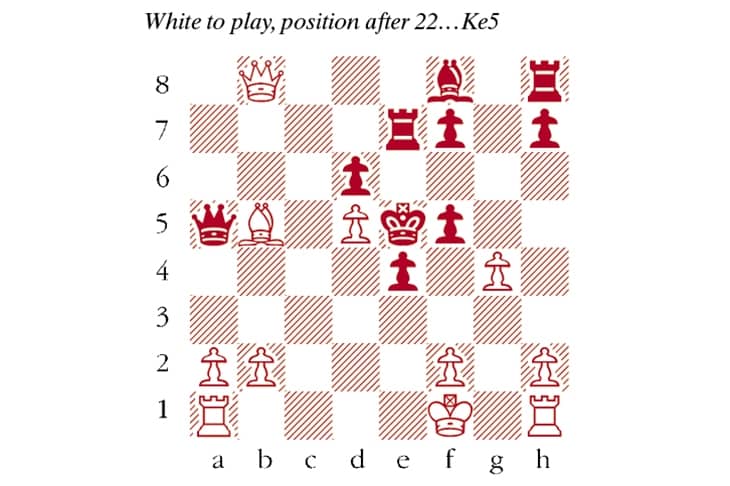There be dragons! What we now call the Sveshnikov variation of the Sicilian defence was, in the 1970s, largely uncharted territory, and viewed with deep suspicion. Its modern name immortalises the Russian grandmaster whose pioneering analytical efforts, and practical success, put the variation on the map.
Evgeny Ellinovich Sveshnikov died on 18 August at the age of 71. After his graduation in 1972, Sveshnikov worked towards a PhD at the Department of Internal Combustion Engines in the USSR. But his career turned towards chess, and in 1976 he was part of the Soviet team which won gold medals at the World Student Team Championship. The following year he was awarded the grandmaster title, and he went on to participate in nine USSR championships. Besides numerous international tournament victories, including Hastings in 1984/85, he had an impressive record against, among others, Mikhail Tal (+3, -3, =7).
Sveshnikov survived a cancer diagnosis at the age of 33. In the latter part of his career, he worked with top players including Karpov, Polugaevsky, Shirov and Kosteniuk, as well as in Russian chess schools. In the 1990s he remarried and moved to Riga and went on to represent Latvia in four Olympiads.
His passion for competitive play was undimmed by advancing years. He remained an active player, and in 2017, won the World Senior Championship in the 65+ category. He was a colourful interviewee, and something of a gadfly in his dealings with chess officialdom, whom he perceived as ignoring the needs of veteran grandmasters. He had four children, including a son, Vladimir, who became Latvian champion in 2016.
I played against Sveshnikov at the Roskilde Open in 1998. By chance, I had recently become captivated by the charms of the Sveshnikov Sicilian, inspired by games like the one below.Since I had the Black pieces, my cheeky intention was to use it against him. Alas, he avoided it by playing 1 e4 c5 2 c3, a system he knew deeply. (In 2010, he published The Complete c3 Sicilian). Young and naive, I made a risky pawn grab which was swiftly punished. He sacrificed his queen and I was soon overwhelmed by a mating attack.
Bozidar Ivanovic–Evgeny Sveshnikov
Yugoslavia–USSR Match, 1976
1 e4 c5 2 Nf3 Nc6 3 d4 cxd4 4 Nxd4 Nf6 5 Nc3 e5 The defining move of the Sveshnikov Sicilian. 6 Ndb5 d6 7 Bg5 a6 8 Bxf6 gxf6 9 Na3 b5 10 Nd5 f5 It was once thought that White’s proud knight on d5 and clean pawn structure promised a good game. These days, the merits of Black’s setup are better appreciated. The bishop pair is a great asset, and the scrappy mass of pawns should not be underestimated, while the Na3 has yet to rejoin the fray. 11 Bd3 Be6 12 c4 Qa5+ 13 Kf1 Bxd5 14 exd5 Nd4 15 cxb5 axb5 16 Nc2 Nxc2 17 Qxc2 e4 18 Qc6+ Ke7 19 Bxb5 Ra7 20 Qe8+ Kf6 21 g4 Re7 22 Qb8 Ke5 (see diagram) The most outlandish moves are often played for the simplest reasons. This one defends the d6-pawn, creating the unexpected threat of …Bf8-g7, trapping the White queen on b8. 23 f4+ Kxf4 24 Ke2 24 Qxd6+ Re5! 25 Qc6 Qd2 and Black maintains some initiative. 24 Be2 was better, preparing Qb8-b3. Ke5 As simple as that! The king is safe now. 25 Rhf1 fxg4 26 b4 Laying a trap, since 26…Qxb4 27 Rf5+ Kxf5 28 Bd7+ wins. Bg7 27 bxa5 27 Qxh8 Qxb5+ wins, as White is in check! Rxb8 28 Rab1 f5 29 a6 f4 The a-pawn is easily restrained, but the tide of kingside pawns cannot be abated. 30 Bc6 f3+ 31 Kf2 Rxb1 32 Rxb1 Kf4 33 Rb4 Bc3 34 Rc4 Ba5 35 Kf1 Bb6 36 Bb7 h5 37 Rc6 e3 38 Rc4+ Kg5 White resigns






Comments